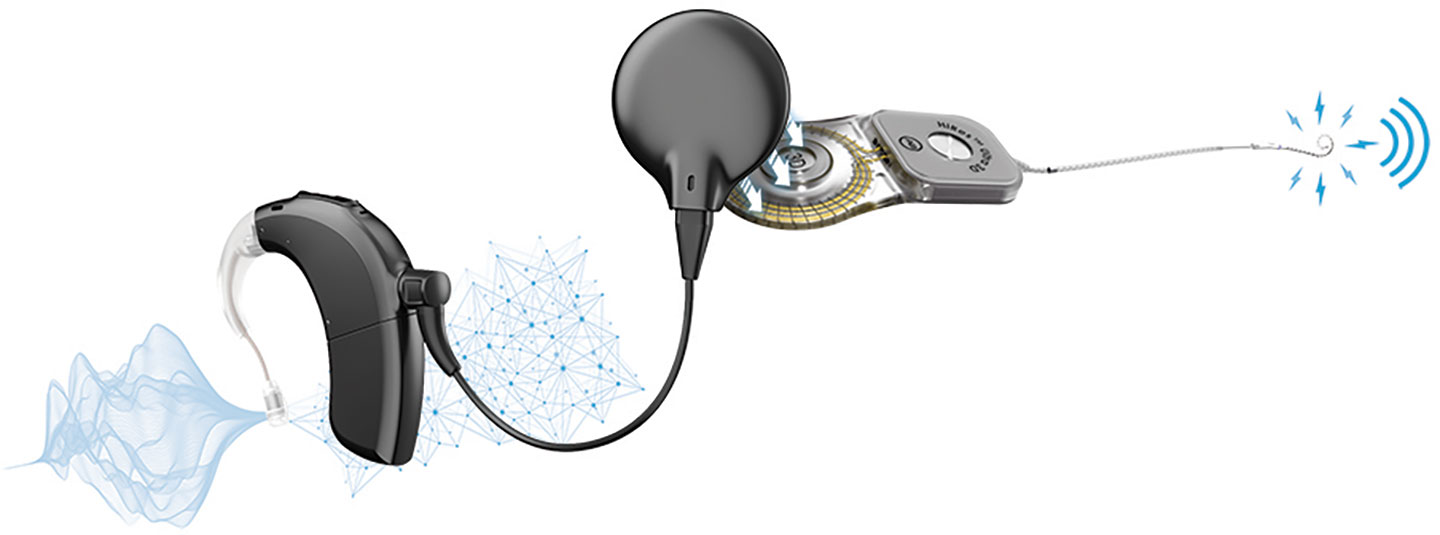Perhaps one of the most important, but often overlooked words in the hearing loss vocabulary is binaural, which means hearing with both ears.
Binaural, bimodal, or bilateral? Hearing loss jargon defined
If words like pinna, cochlea and sensorineural aren’t part of your daily language – you aren’t alone. The amount of medical vocabulary surrounding hearing can make your head spin. Add in a hearing loss, and you aren’t sure if your audiologist said bilateral, binaural, or bimodal. This article will help clarify audiology terms and help you find the right solution for your hearing loss.
Words to describe hearing loss
Hearing loss can affect one or both ears. When it is only in one ear, it is referred to as unilateral hearing loss. Bilateral means two sides, so bilateral hearing loss describes loss in both ears. There are two main types of hearing loss: sensorineural and conductive. Sensorineural hearing loss is a permanent form of loss due to damage of the sensory cells of the inner ear, called the cochlea, or the auditory nerve. This type of hearing loss can be caused by noise exposure, genetics, aging, or many other factors. The most common and effective form of treatment for sensorineural hearing loss is hearing aids or cochlear implants.
Conductive hearing loss occurs when sound is obstructed along the pathway from the outer ear, known as the pinna, to the inner ear. Common causes of conductive hearing loss include wax blockage, ear infections, and middle ear conditions such as otosclerosis. Treatment for conductive hearing loss can include medication, surgery, or assistive devices, including hearing aids and cochlear implants. Sensorineural and conductive hearing loss can be present in the same ear, in which case, it is called a mixed hearing loss.
Words to describe hearing solutions
If you are diagnosed with hearing loss, the audiologist will give you a treatment recommendation. Hearing aids are most commonly prescribed for mild to moderate losses. Cochlear implants are recommended for more severe or profound hearing losses, or when an individual is not receiving sufficient benefit from hearing aids alone.

Hearing aids work by amplifying sound and sending it into the ear. A cochlear implant bypasses the damaged portion of the ear to stimulate the hearing nerve directly. Like a hearing aid, the cochlear implant system captures sound through one or more microphones. Once the sound is collected, it is processed and transmitted through the headpiece to the implant. The processed sound, now taking the form of electrical impulses, is sent through electrodes to the hearing nerve, allowing the person to hear.
Perhaps one of the most important, but often overlooked words in the hearing loss vocabulary is binaural, which means hearing with both ears. This is one of the most fascinating and powerful abilities of the human brain. Numerous studies have shown that when the brain receives input from both ears, it is able to form a clearer and more complete soundscape. Binaural hearing helps us better localize where sounds come from. It improves the sound quality of music, makes speech clearer in noisy situations, and generally improves the listening experience. That’s why we have two ears! For those without hearing loss, the clear benefit of binaural hearing is easily experienced by listening to music through only one earbud versus two.
I had a wonderful speech pathologist who explained to me that I had entered into a hearing marathon. I had to do my exercises and train my brain for this marathon. There would be ups and downs, leaps forward and some setbacks. And she was certainly right. At first, the microwave beep sounded like a clicker. Water running sounded like a rattling chip bag.
When people with bilateral hearing loss are only treated in one ear, either with a hearing aid or a cochlear implant, they miss out on binaural hearing. That’s why they often report hearing speech well in quiet situations, but have difficulties in noisy or other challenging listening situations. They frequently reposition themselves to hear better, experience increased listening effort and fatigue, and have reduced sound awareness on their non-implanted side.
Bimodal solutions
When there is hearing loss in both ears, therefore, the best solution should be for both ears, whether that consists of two hearing aids, two cochlear implants, or one of each, depending on the hearing loss. Some people may be skeptical about hearing with a bimodal solution, which means using a hearing aid and a cochlear implant together. But in fact, as technology continues to improve, individuals and professionals alike are seeing the benefits offered by bimodal solutions.
Although the two kinds of technology deliver sound differently, the brain can quickly adapt to blend the two inputs together to form a more complete soundscape. People with this kind of fitting often report that their cochlear implant provides speech clarity while their hearing aid allows them to hear the lower pitched sounds. This often contributes to improved sound quality, especially for music.

In fact, as technology continues to improve, individuals and professionals alike are seeing the benefit offered by bimodal solutions.
The most advanced solutions feature cochlear implants and hearing aids that are designed to work together as a pair, featuring matching designs and colors. They share sound processing, analyzing the sounds in the environment together, highlighting speech, and suppressing noise. It’s even possible to control both devices simultaneously using a single remote control, and to wirelessly stream phone calls, music, and other audio sources directly to both ears.
There are so many specialized terms used around hearing loss and hearing technology that it might become confusing. Hopefully, this article helped clarified some of these terms. Perhaps that the next time you speak with your hearing care professional, you will feel more empowered to discuss how these terms apply to you, and what is the best solution for your hearing loss.
